Lessons from covering candidates like Trump
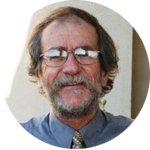
Jim Stasiowski, writing
Writing coach Jim Stasiowski welcomes your questions or comments.
Call him at
(775) 354-2872
or write to:
2499 Ivory Ann Drive
Sparks, NV 89436.
Years ago, I learned a painful lesson watching Donald Trump.
No, not the one who is our president-elect; the candidate whose coverage I witnessed was running for county commissioner, and although he lost, he was Trump-like: loud, uninhibited, angry and loose with facts and accusations. He also was extremely entertaining.
The lesson came when a colleague covered a candidates forum. Such forums (fora?) often are dreary affairs, with well-meaning folks speaking to a modest-sized crowd and, for a couple of minutes each, promising jobs, economic development, careful spending, new programs, devotion to motherhood, love of puppies, etc. The presentations rarely rise above the superficial, usually not because the candidates are stupid or lazy, but because the format allows little time for depth.
But the Trump-like candidate – I’ll call him Lance – was different. He was theatrical bordering on frantic, and although much of what he said was vacuous attacking of the incumbent, he aroused the crowd.
My colleague who covered the forum focused his story on Lance. He wrote it knowing Lance was more qualified for “Saturday Night Live” than for public office, and his misstep was that he assumed readers would recognize that Lance had no serious positions, just mindless anger at the status quo.
The reporter’s reasoning was that the other speakers were bland; at least Lance would draw readers.
Tactically he was correct; readers responded. However, the story was strategically wrong, as it gave too much unchallenged space to a crackpot. The reporter should have written a standard candidates-forum story that mentioned, but didn’t dwell on, Lance, then followed with a rigorously reported follow-up showing Lance was spouting absurdities.
That was my lesson.
Now, it would be irresponsible to equate President-elect Trump with Lance. Yes, both tapped into the anger and distrust among the electorate. But Trump, despite his faults, is an accomplished person with a record of dealing with complex real-world problems. As a candidate, Lance was a dilettante who could deliver a rousing speech but whose background did not merit a decision-making role in government.
Criticism of the news coverage of Trump’s campaign has flowed, um, liberally since Election Day, some of it self-directed, although weird. The New York Times’ publisher and executive editor penned a letter “To Our Readers,” in which they praised “our newsroom” for its election-night coverage, then seemed on the verge of apologizing for something – “… we aim to rededicate ourselves …” – then snuffed the apology and vowed to cover President Trump diligently.
The Wall Street Journal published a remarkable column by its deputy editorial page editor who had criticized Trump throughout the campaign. The column’s thoughts were unremarkable; it was standard, “I’m a columnist, and I have to express my honest opinion” stuff, the very definition of a column.
What was remarkable was that the columnist thought he had to say it. In thinking he had to explain his role, he didn’t show much respect for the intelligence of readers.
All of this “rededication” and public introspection seems honorable, but it’s meaningless if we don’t learn from what really happened in the 2016 campaign. Just as my colleague (and I) assumed voters would see Lance for what he was, journalists started covering Trump as a goofy footnote who would liven up the tedium of the early primaries.
By the time journalists started taking him seriously, their profuse “Look at this funny guy!” coverage had built up Trump’s following, and traditional candidates couldn’t catch up.
After Trump’s election, two outcomes are possible, and they might coincide: (1) More candidates will adopt the Trump-Lance approach of loud, bold, insulting comments – his assertion that Jeb Bush was “low energy” devastated the acknowledged front-runner’s campaign – to gain early attention for an otherwise long-shot campaign. (2) Astute journalists, both reporters and their demanding editors, will not let candidates build a following based on bombast.
And one more thing must be considered: Even before The Lesson Of Lance, I got a schooling from a different iconoclastic candidate. He was running for mayor, and he ripped into everything the city had done or was doing.
One night after a candidates forum, he took me aside and, smiling broadly, he said, “I trust your story tomorrow will make me look bad.”
A young reporter, I was perplexed.
He added, “As long as the press is against me, I know I’ll win.”
He did, and as I watched Candidate Trump, I thought: If the country is as angry as he says, the negative stories will only help him because the traditional news media is perceived as propping up the status quo fueling that anger.
THE FINAL WORD: When I see a book on word usage, I have to have it, so I recently bought “Bryson’s Dictionary of Troublesome Words” by the delightful Bill Bryson.
Skimming it, I found that the plural of “mongoose” is “mongooses.” Bryson explains: “The word is of Indian origin and has no relation to the English ‘goose.’”
This is going to be fun.
Industry News – Dec 2016
Headliners
- R.I. school fined $1,000 for breaking public records law
- VTDigger: Vt. Gov. Shumlin puts lid on public records
- Transit agency in Mass.’s ‘abysmal’ stonewalling on files
- Globe’s STAT adds subscription service
- Maine daily urges openness on state private-firm pacts
- Mass. college calls cops on reporter in flag burning flap
- Connecticut court to decide if insults were free speech
- Boston’s MuckRock adds free tools site FOIA Machine
- Mass. IT agency uses ‘public safety’ excuse to hide files
- Boston’s Burst melds user videos with client platforms
- Northeastern among 49 J-schools in Google News Lab
- N.H.’s Loeb School lists its 2017 workshop schedule
- Registration open for BU’s March narrative workshop
Obituaries
- Robert O.Y. Warren III, former chairman of The Suffield (Conn.) Observer
- Brian R. Mahoney, editor in chief of South Boston Today
- Phyllis Austin
- Robert H. ‘Bob’ Zaiman
- Susan Taz
- Jefferson D. ‘Jeff’ Ackor Sr.
- Nubar Berberian
- Ann Allen Brahms
- Stephen Harvey Mazurka
- Carl F. Furtado
- Eugene J. Maxwell Sr.
- Pentti M. Laine
- Joan M. (Sughrue) Dunlevy
- Nancy L. (Albert) Gallucci
- Joan Elizabeth McCarthy
- Mildred E. Plank
Transitions
MASSACHUSETTS
- Alan English appointed publisher of Pittsfield-based New England Newspapers Inc.
- Martin Langeveld
- Edward L. Woods
- Charlie Mansbach
VERMONT
- Patricia M. Sears named publisher of the Newport Daily Express, replacing Ken Wells
- Ken Wells
- Olga Peters
Briefs
Awards and Honors
Advertising News
Advice
Training
Mobile/Online News
- How users are responding to mobile news alerts
- Study: Most on smartphones getting alerts like them
- Globe’s not-yet-profitable STAT adds subscriptions
- Boston’s Burst melds user videos with client platforms
- Study: Google search results slant to politically liberal
- Survey-based look at who, why of online commenting
- HTTPS better for security, privacy, search rankings
Social Media News
- Free-speech problems are inherent on social networks
- Facebook a major referrer to hyperpartisan, fake sites
- Facebook surveying users on accuracy of headlines
- Google deemed outdoing Facebook in vetting fake news
- An argument against Facebook doing fact-checking
- Can good journalism drown social media’s fake news?
- Trump win seen as 1 marker of social media’s influence
- Snapchat grows in popularity, except with press
- Snapchat change reduces traffic for Discover publishers
- Publishers finding success with news on Instant Articles
Legal Briefs
- Mass. AG Healey negates state’s pro-disclosure ruling
- Mass. AG sues 3 DAs to release public records
- R.I. school fined $1,000 for public records violation
- VTDigger: Vt. Gov. Shumlin puts lid on public files
- R.I. gov asks court to hide files in Schilling-firm probe
- Mass. transit agency continues stonewalling on files
- Website seeks files on Mass. National Guard lead issue
- Boston cops’ new software to scan social media
- Maine daily urges openness on state private-firm pacts
- Mass. IT agency uses ‘public safety’ excuse to hide files
- Trump’s flag-burning sanction apes toothless Vt. law
- N.H. Union Leader lauds winner of e-records case
- Conn. court to decide if insults were free speech
- N.E. papers among those filing FOIA bids since 2001
- R.I. solons seek detour for panhandling’s protection
Industry News
- Boston’s MuckRock adds free tools site FOIA Machine
- Mass, college calls cops on reporter about flag burning
- Wesleyan’s student paper among those threatened
- Globe editor steadfast on sustaining Spotlight team
- New AP news chief vows faster news bits, survival help
- Nat’l news ass’n asks Trump for press-favored changes
- Newspaper group survives, grows as unusual nonprofit
- Advice and growing efforts to ferret out fake news
Better Newspaper Competition Judging – Slideshow
Combined Class
Vineyard Gazette
In 2015 Island Said Goodbye
www.vineyardgazette.com/2015-goodbye
Sentinel & Enterprise
Leominster and Fitchburg remember Orlando shooting victims with vigils
http://photos.sentinelandenterprise.com/2016/06/13/leominster-and-fitchburg-remember-orlando-shooting-victims-with-vigils/#1
Johnny Ro Veterans Memorial Park dedication ceremony
http://photos.sentinelandenterprise.com/2015/09/12/johnny-ro-veterans-memorial-park-dedication-ceremony/#1
Telegram & Gazette
Longsjo Pro Races: Worcester
http://www.telegram.com/sports/20160625/longsjo-classic-inspired-ellen-noble-breaks-through-for-worcester-crit-win-bailey-takes-mens-race
Better Newspaper Competition Judging – Multimedia Coverage
Weekly
On the Front Porch of History
www.vineyardgazette.com/historic-expansion
Bakers Experiment with Ancient Grains
www.vineyardgazette.com/ancient-grains
Daily
Better Newspaper Competition Judging – Best Infographic on Website
Combined Class
Interactive Map of Historic District Expansion
www.vineyardgazette.com/expansion-infograph
Better Newspaper Competition Judging – Spot News Video
Weekly
The Ellsworth American.
Fletchers Landing Fire
The Inquirer and Mirror
MHC Fire
Mount Desert Islander
Otter Cliffs Crash in Acadia
Vineyard Gazette
New Lagoon Pond Drawbridge Opes for First Vessle
https://vineyardgazette.com/drawbridge-opens
Daily
The Burlington Free Press
The shooting of Phil Grenon
http://www.burlingtonfreepress.com/story/news/local/2016/03/21/burlington-police-shooting-standoff-downtown/82102168/
DNC Flag burning vs. free speech
http://www.burlingtonfreepress.com/videos/news/2016/07/29/87748328/
Police react after DNC protesters breach fence
http://www.burlingtonfreepress.com/videos/news/2016/07/28/87654882/
Cape Cod Times
Giant cliff collapses in Truro
Racoon released after head freed from grate
Who shot Dempsey the cat?
http://videos.capecodtimes.com/capecodtimes/ll9p1p
The Republican
Neighbor describes Holyoke building collapse

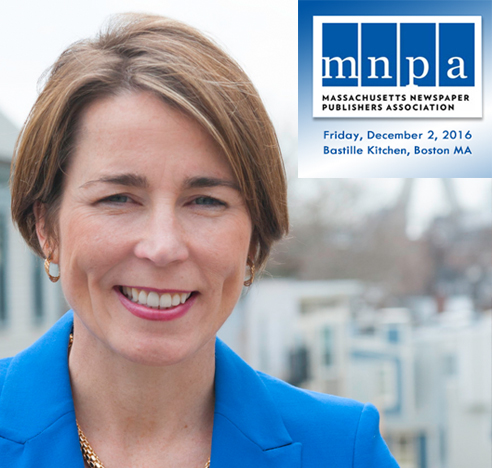
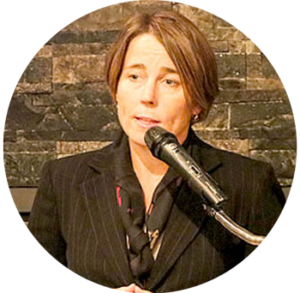
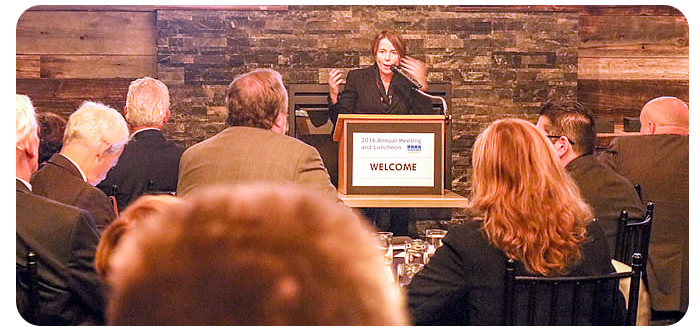
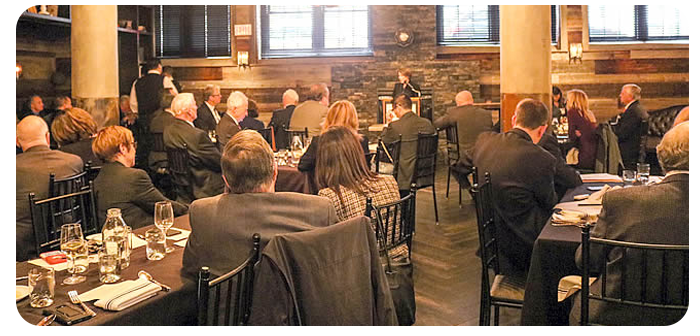

Free press future: back to the basics, but in a new way
Gene Policinski, inside the First Amendment
Gene Policinski is chief operating officer of the Newseum Institute and senior vice president of the Institute’s First Amendment Center. He can be reached at gpolicinski@newseum.org.
Follow him on Twitter:
@genefac
There’s no one “key” to why so many believe that journalists missed the rise and election of Donald Trump as president — and that’s a good thing to keep in mind for the future.
There’s no easy answer to why so many Americans are so critical of the press, so distrustful of news reports and so convinced — particularly post-election — that journalists are out of step and out of touch.
And yet, a fair amount of speculation in print and on television — including great gobs of gassy talk show speculation — seems focused around ideas that it was Facebook foolishness, retweets of “fake news” or even “the death of facts” that were responsible for Trump’s rise from pre-primary punch line to being president-elect.
Some post-election retrospectives did provide valuable critiques of at least the top-level network and national newspaper performance during the 2016 campaign. Common threads: Too many paid too much attention to too many meaningless polls, a fixation on personality over substance, and too little reporting on the issues that mattered.
But still, the search for “the” reason goes on. The Washington Post even gave up serious real estate on its pages to a purveyor of blatantly false stories, including one claiming that the Pope had endorsed Trump. When asked the vacuous question “Did you personally help elect Donald Trump,” even this admitted faker had to say, “I don’t know. I don’t know if I did or not. I don’t know.” Neither would anyone reading the item.
And then there is the flap over “Hamilton,” in which Trump tweeted a criticism of a cast member’s on-stage, post-performance lecture on diversity aimed at departing Vice President-elect Michael Pence. Recalls another play, of another time: “Much Ado About Nothing.”
Nearly a week later, far too much print, TV and web space continues to chatter on about it, diverting public attention and scarce resources and time from the actual news of the day around the incoming administration: Cabinet selections, domestic and foreign policy positioning, and more around the transition from Obama to Trump.
So, if not chasing down spurious claims of how the election was won, or rehashing an unscripted “Hamilton” moment, what’s a journalist — and those who own the means of journalism — to do?
A few thoughts:
Step away from the screen and deal with an obsessive interest in tweets, bleats and social media nonsense. Give readers and viewers and listeners and users some real news to resend to friends, about things that matter: jobs, education, health and faith, as starters.
For those who constitute a free press, recognize that your strength and your appeal rest in representing those who support your work through subscriptions, fees or contributions. Recognize that such fluff and trivia are not the stuff of lasting relationships with consumers, to be lost in the glare of the next shiny bright thing.
Lest this seem too much like a call to return to post, one final bit of advice: Innovate. Really innovate. In its newest edition, the industry publication Editor & Publisher offers a glimpse into the fast-changing newsroom of The Washington Post, now rife with online tools and methods of reaching news consumers that include a “lightning-fast” mobile website, and programs such as “Bandito, a home-grown tool that lets editors publish articles with as many as five different headlines and photos to figure out which is the most engaging to readers.”
The Post, propelled by the investment of owner Jeff Bezos, who also owns Amazon, is not ignoring the bottom line while pursuing the future. As Editor & Publisher reports, “Then there’s Arc, the Post’s home-made content management system which they have begun licensing out to other news organizations,” in what could be a $100 million-a-year business.
Surely such new tools as video and gaming technology — and innovative ways of revising the basic structure of news outlets, from a return to local owners who can accept profit margins that chill Wall Street investors to publicly supported, collaborative newsgathering — can bring credible information to a public that needs it.
There also is the new and pervasive presence of information sources such as Google News — which can bring amazing amounts of core information in partnership with existing and yet-to-come news providers.
Yes, there’s no one “key” to a return to a thriving news industry — and to dealing quickly with the loss of thousands of talented, experienced journalists by disruption of their industry’s financial model.
But to focus on or be distracted by the trivial is to self-define in the same terms. It’s also to break faith with the nation’s founders, who accepted and protected an opinionated, partisan — often, even opposition — press because the role and those views were rooted in discussion of the serious matters of self-governance.